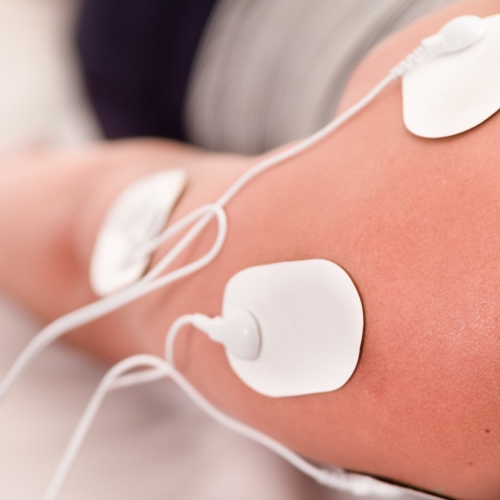Iontophoresis is the transdermal delivery of medications or therapeutic agents into the body through the skin using a mild electrical current. The goal is to administer treatment directly at the site of pain or inflammation, minimizing systemic effects. This process is not only painless but also highly effective, making it a valuable tool in the management of various painful conditions.
Iontophoresis is an innovative pain management method that is gaining popularity. Pain management has come a long way in recent years, with numerous novel techniques and treatments that offer some relief to people living with chronic pain. Iontophoresis is a non-invasive procedure that has proven effective in alleviating pain and discomfort for a variety of conditions.
But what exactly is iontophoresis? How does it work? And what are its applications in pain management? Here’s what you need to know:
What Is the Mechanism of Iontophoresis? How Does It Work?
The process of iontophoresis involves the use of an iontophoresis machine or device, which is used in physical therapy and pain management clinics. The device consists of two electrodes: a positive electrode and a negative electrode. One electrode is placed on the site where the treatment is required, while the other electrode is typically positioned elsewhere on the body, creating a closed circuit.
An ionically charged medication or therapeutic solution is applied to the electrode with the same charge, which is then placed on the targeted area. When the machine is turned on, a low electrical current is applied. Because two substances with the same charge repel one another, the ions from the medication receive a nudge through the skin and into the underlying tissues.
The therapeutic agents used in iontophoresis include anti-inflammatory drugs, analgesics, corticosteroids, and other pain-relief medications. This delivery method ensures that these medications go directly to the affected tissue, bypassing the digestive system and potential side effects associated with oral medication.
Iontophoresis is being adopted in the field of pain management for numerous reasons. Here are some key applications and benefits:
1. Reduce Inflammation
Inflammatory conditions such as tendinitis and bursitis can cause significant pain and discomfort. Iontophoresis is a valuable tool for delivering anti-inflammatory medications directly to the affected area. This localized approach can help reduce inflammation, alleviate pain, and promote faster healing.
2. Provide Pain Relief
For individuals living with chronic pain, iontophoresis can provide relief. By applying analgesic medications directly to the site of the pain, this technique can help people manage discomfort without the systemic side effects that oral pain medications can cause.
3. Target Treatment
Iontophoresis enables highly targeted treatment. Medication is administered precisely where it is needed, minimizing unnecessary exposure to the rest of the body. It also means a smaller dose can be extremely effective because it is not being diluted by the circulatory system. This precision is especially beneficial when treating plantar fasciitis or carpal tunnel syndrome.
4. Non-Invasive
Iontophoresis is non-invasive, making it an attractive option for patients who want to avoid injections or surgical procedures. It’s a painless treatment that can be administered in an outpatient setting, often without the need for anesthesia.
The Use of Iontophoresis in Physical Therapy
Physical therapists can utilize iontophoresis to complement their treatment plans. This modality can help facilitate the recovery process and improve patient outcomes. Iontophoresis is particularly effective when integrated into a comprehensive rehabilitation program for people with musculoskeletal injuries.
One common application in physical therapy is the treatment of conditions like lateral epicondylitis, commonly known as tennis elbow. This painful condition can significantly impede a person’s ability to perform everyday tasks and engage in physical activities. Iontophoresis delivers anti-inflammatory medications directly to the inflamed tendons, reducing pain and promoting healing.
The Impact of Iontophoresis in Modern Pain Management
Iontophoresis is a non-invasive, targeted, and effective modality for relieving pain and managing certain musculoskeletal and inflammatory conditions. By delivering medication directly to the affected area through the skin, iontophoresis minimizes the risk of systemic side effects and provides localized relief. It has found a place in pain management, offering hope and comfort to those who have been dealing with chronic pain.
As the field of iontophoresis continues to evolve, advancements are being made to further enhance the effectiveness of this treatment. Physicians and physical therapists who regularly treat patients with chronic pain or musculoskeletal injuries should consider offering iontophoresis to their patients. The potential benefits of this innovative approach are numerous and can help patients on their journey to pain relief and improved quality of life.

